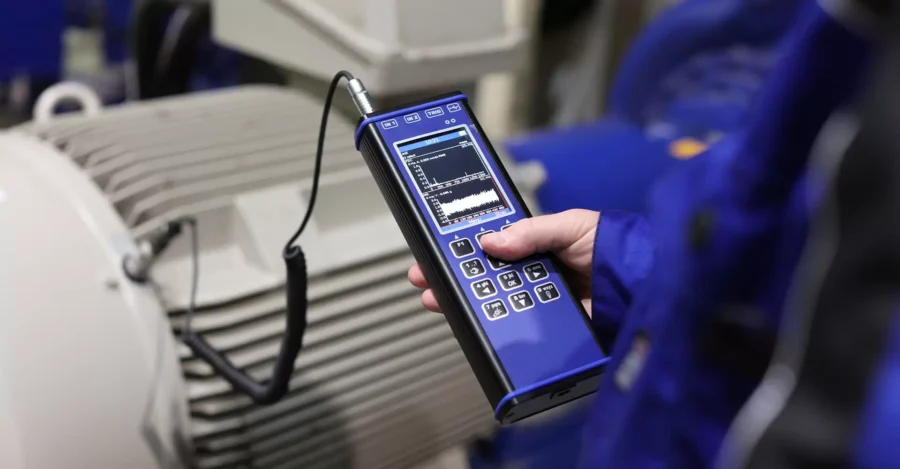Vibration measurement is a critical process in various industries, including aerospace, automotive, structural engineering, and manufacturing. Understanding vibration characteristics helps engineers and researchers assess structural integrity, machine performance, and environmental impact. This article explores the fundamental principles, techniques, and tools used in vibration measurement.
Introduction to Vibration Measurement
Vibration refers to the mechanical oscillations of an object around an equilibrium point. These oscillations can be caused by internal forces, external stimuli, or operational conditions. Vibration measurement involves quantifying these oscillations in terms of frequency, amplitude, and direction to analyze and mitigate potential issues.
Importance of Vibration Measurement
Accurate vibration measurement is essential for several reasons:
- Machine Health Monitoring: Detecting abnormal vibrations in rotating machinery can prevent breakdowns and optimize maintenance schedules.
- Structural Health Monitoring: Monitoring vibrations in buildings, bridges, and other structures ensures early detection of defects or damage.
- Product Quality Assurance: Ensuring products meet vibration tolerance specifications to maintain performance and reliability.
- Environmental Impact Assessment: Evaluating vibrations from construction, transportation, and industrial activities to minimize impact on nearby communities.
Techniques for Vibration Measurement
- Accelerometers
Accelerometers are the most commonly used sensors for vibration measurement. These devices measure acceleration forces in three axes (x, y, z) and convert them into electrical signals proportional to the vibration amplitude. Accelerometers can detect vibrations across a wide frequency range, from low-frequency seismic activities to high-frequency vibrations in machinery.
- Velocity Sensors
Velocity sensors measure the rate of change of displacement caused by vibrations. They are particularly useful for low-frequency vibrations and are less sensitive to high-frequency noise compared to accelerometers. Velocity sensors provide a direct measurement of vibration velocity, which correlates with the severity of mechanical faults.
- Displacement Sensors
Displacement sensors directly measure the amplitude of vibrations in terms of displacement from the equilibrium position. These sensors are highly accurate but are mainly used for low-frequency vibrations due to their limited frequency response. Displacement measurements are crucial for assessing structural deformations and performing precise alignment tasks.
- Strain Gauges
Strain gauges measure strain induced by vibrations in structural components. They are bonded to surfaces where strain changes occur and convert mechanical deformation into electrical resistance changes. Strain gauges are valuable for monitoring stress levels in critical components subjected to dynamic loading conditions.
Tools and Equipment for Vibration Measurement
- Vibration Analyzers
Vibration analyzers are portable devices that combine hardware and software to capture, analyze, and display vibration data. They offer real-time monitoring, frequency analysis, and diagnostic capabilities to identify specific vibration patterns and their causes. Advanced vibration analyzers can generate reports and recommend corrective actions based on analyzed data.
- Data Acquisition Systems
Data acquisition systems (DAQ) collect and process vibration signals from sensors for further analysis. These systems include analog-to-digital converters, signal conditioning modules, and software for data visualization and interpretation. DAQ systems enable continuous monitoring and logging of vibration data to track trends and assess long-term performance.
- Modal Analysis Systems
Modal analysis systems measure the dynamic characteristics (natural frequencies, mode shapes) of structures subjected to vibrations. They use excitation sources (such as shakers) to induce controlled vibrations and sensors to capture response data. Modal analysis helps engineers understand structural behavior, identify resonant frequencies, and optimize design parameters.
Challenges and Considerations
- Environmental Factors
Environmental conditions, such as temperature variations and electromagnetic interference, can affect sensor accuracy and data quality. Proper sensor placement and calibration are crucial to mitigate these effects and ensure reliable measurements.
- Frequency Range
Different applications require sensors capable of measuring vibrations across specific frequency ranges. Selecting sensors with appropriate frequency response ensures accurate measurement of vibrations relevant to the application.
- Data Interpretation
Interpreting vibration data requires expertise in signal processing and analysis. Engineers use frequency spectra, time-domain plots, and vibration severity criteria (ISO standards) to diagnose faults, assess risks, and make informed decisions regarding maintenance and operational strategies.
Vibration measurement is integral to maintaining the performance, safety, and reliability of machinery, structures, and products across diverse industries. By employing advanced sensors, analyzers, and techniques, engineers can accurately assess vibration characteristics, diagnose faults, and implement proactive maintenance practices. Continuous advancements in sensor technology and data analysis capabilities further enhance the effectiveness of vibration measurement in optimizing operational efficiencies and ensuring structural integrity.
In summary, understanding the fundamentals of vibration measurement equips professionals with the knowledge and tools needed to mitigate risks, enhance product quality, and innovate in their respective fields.
